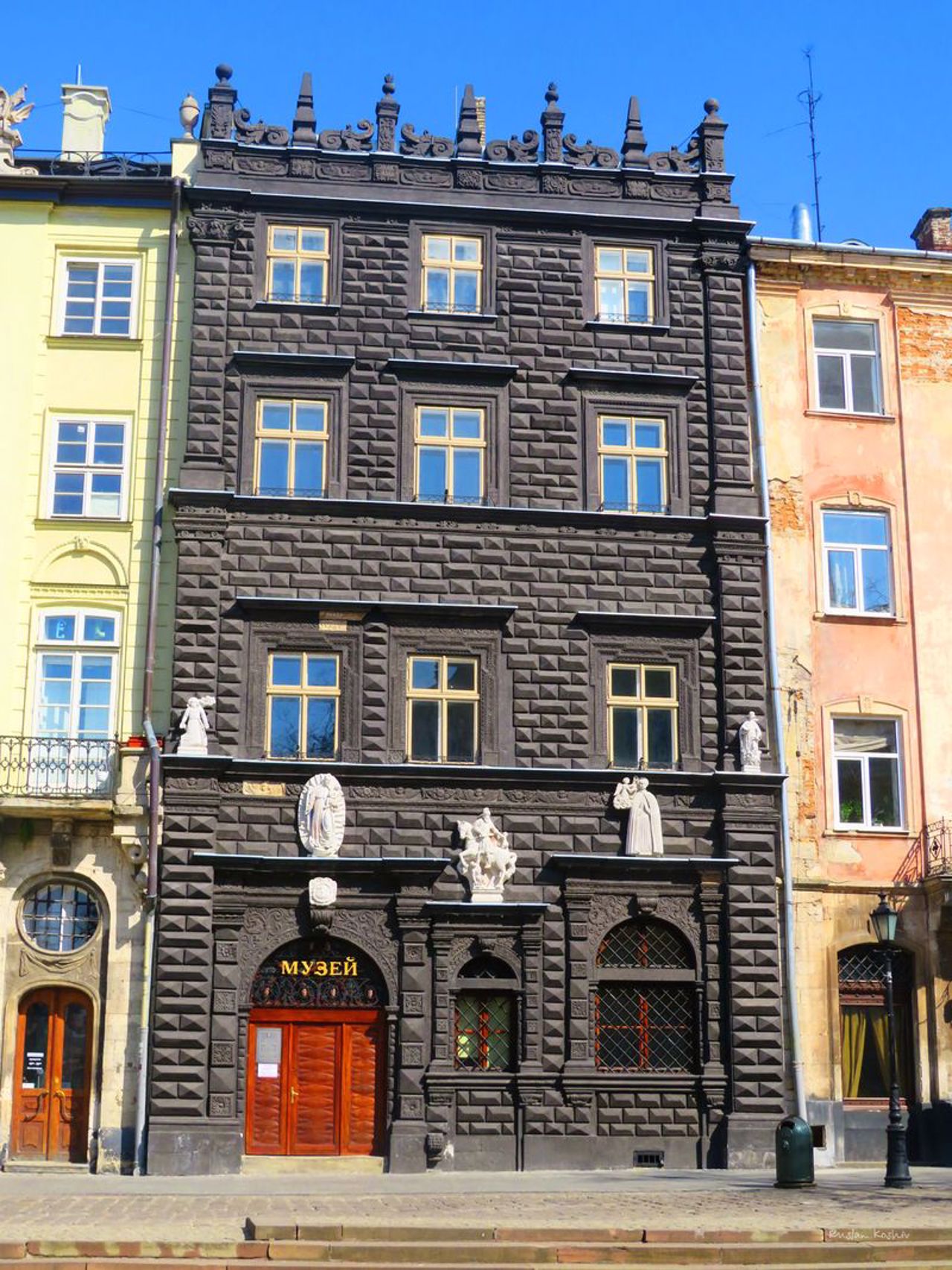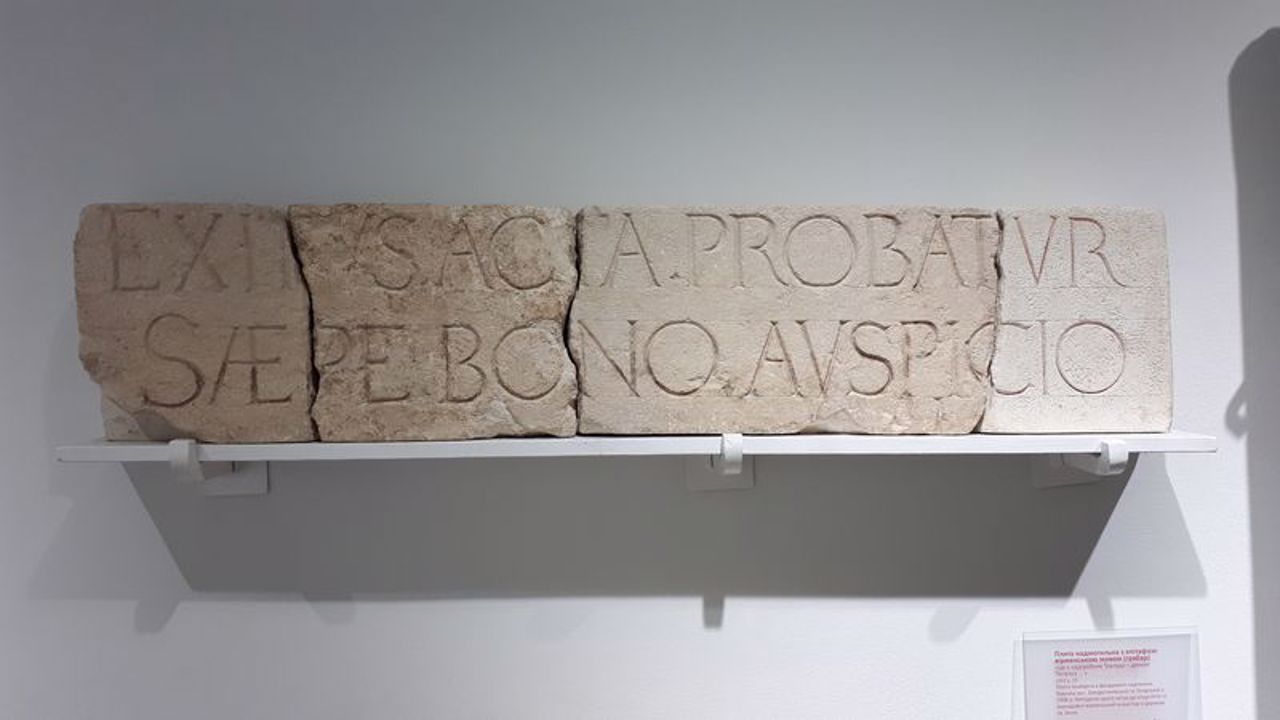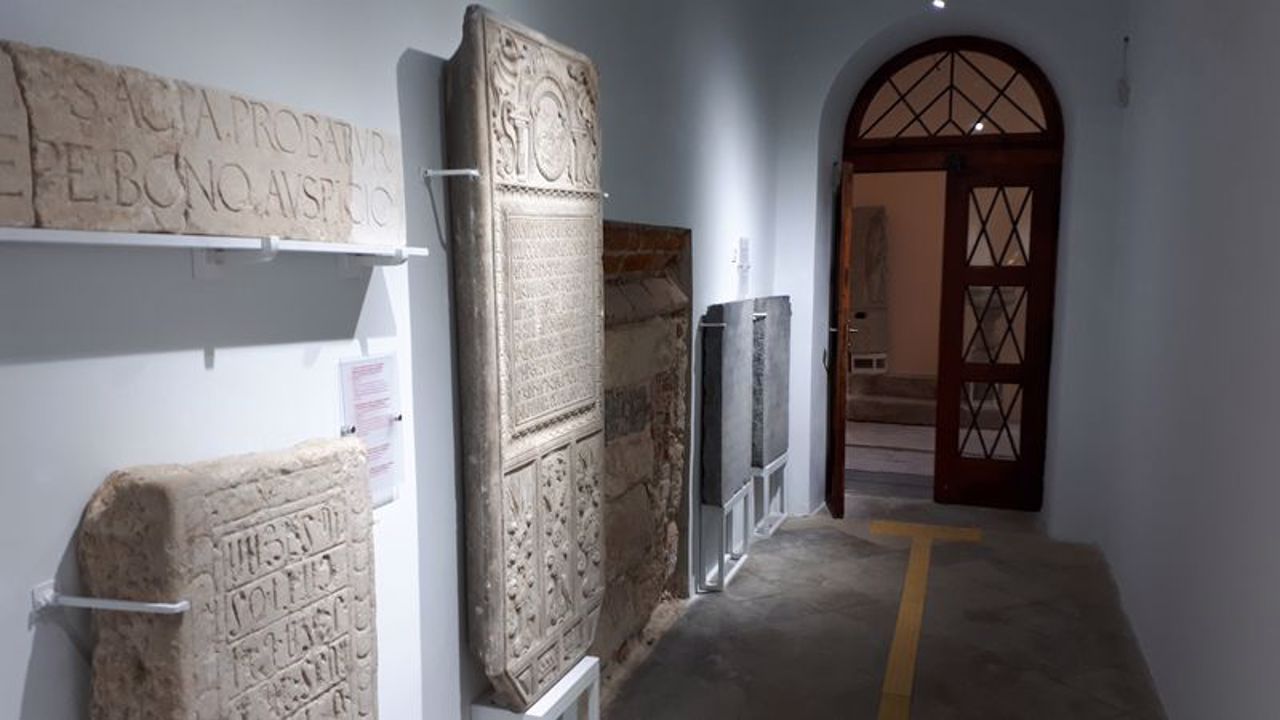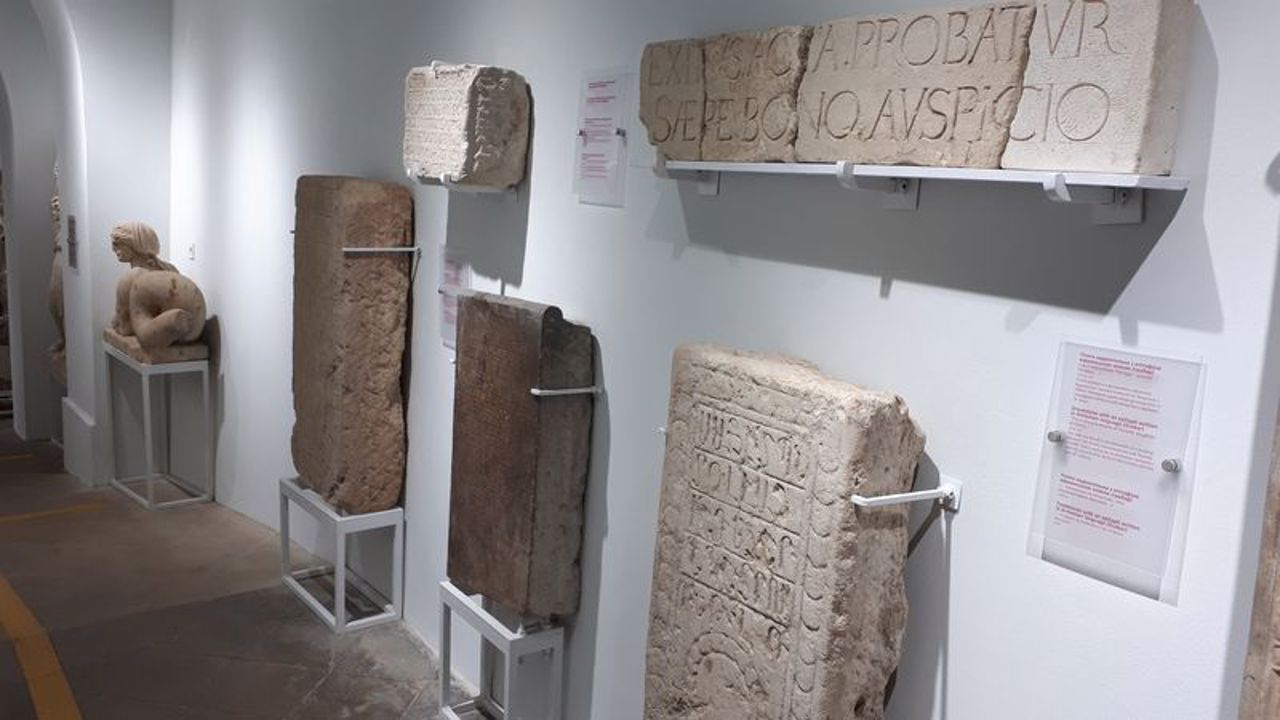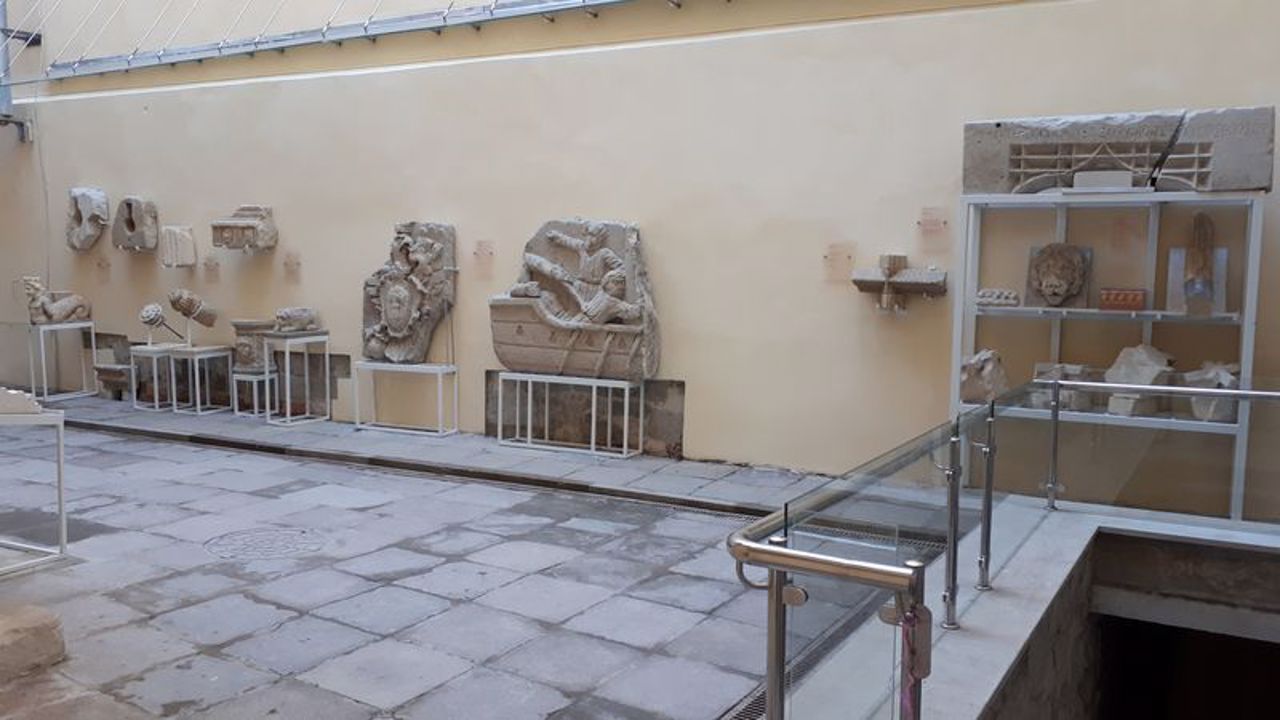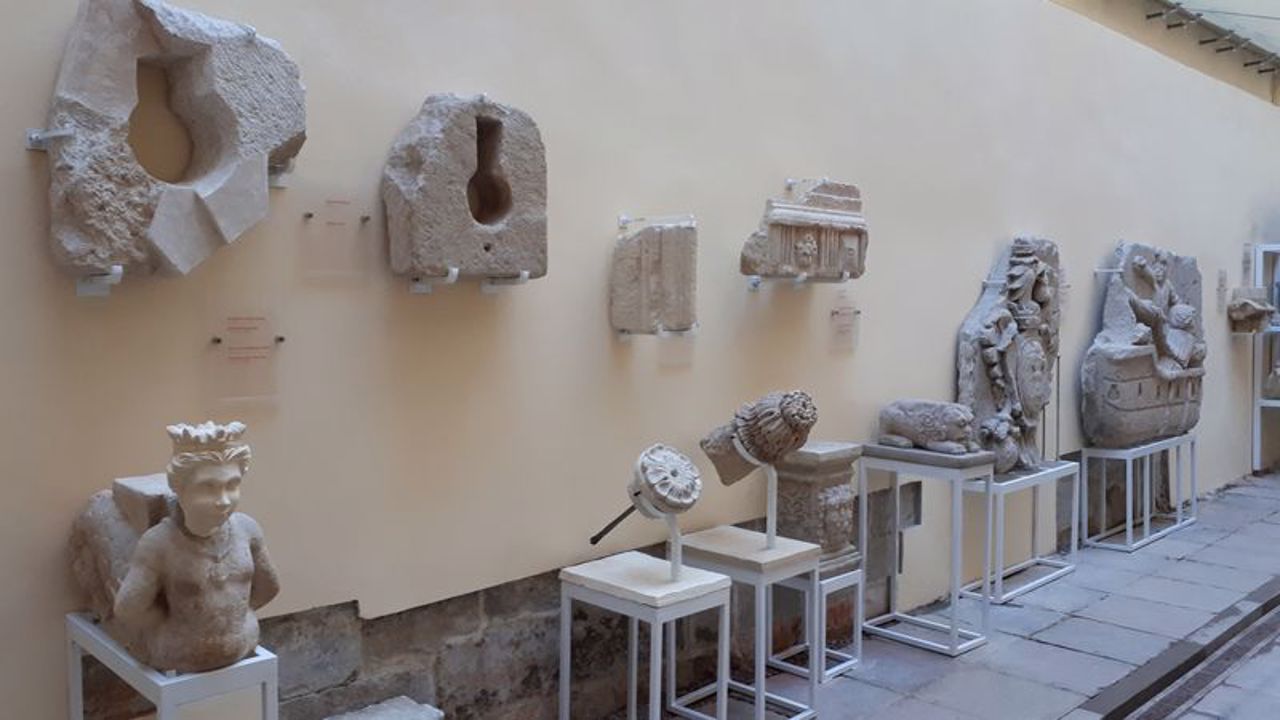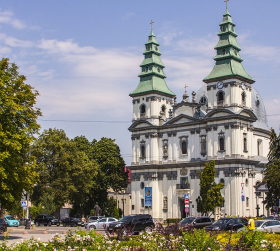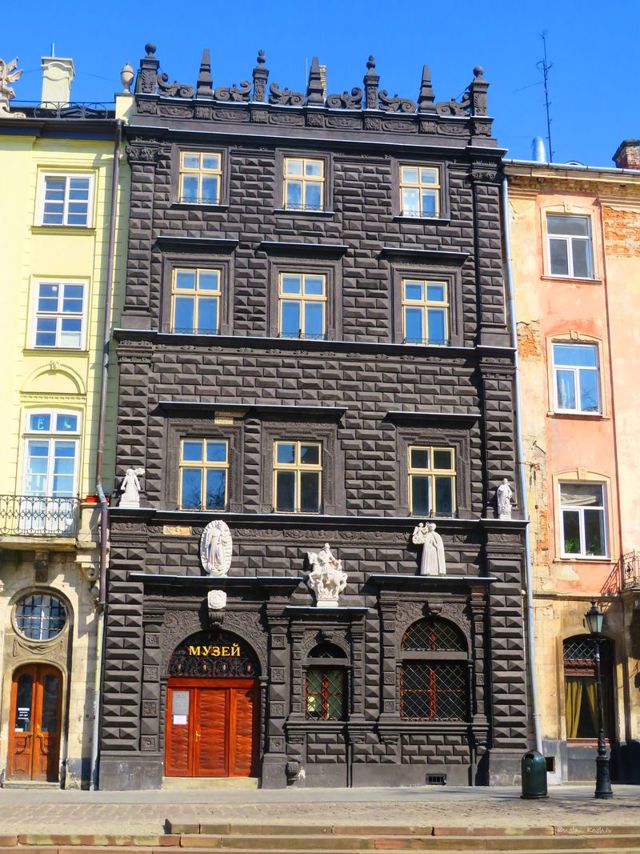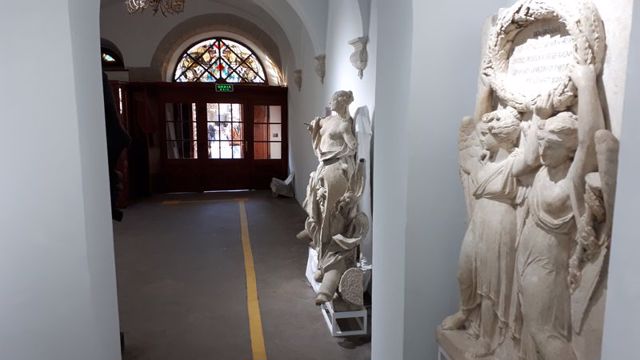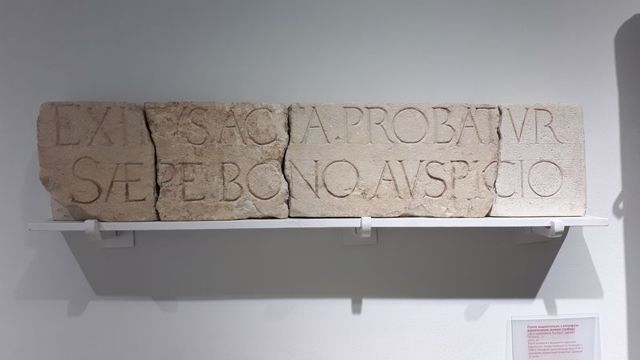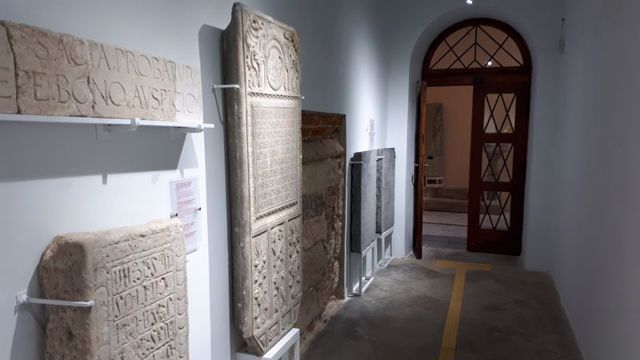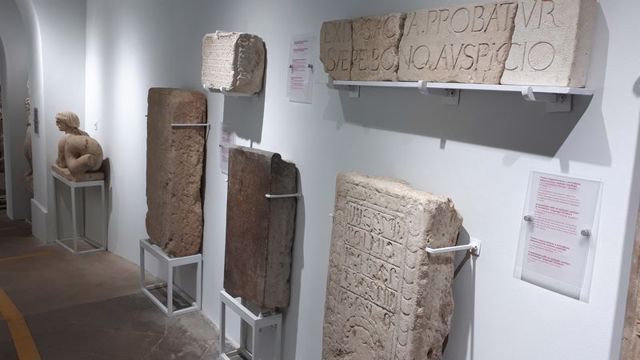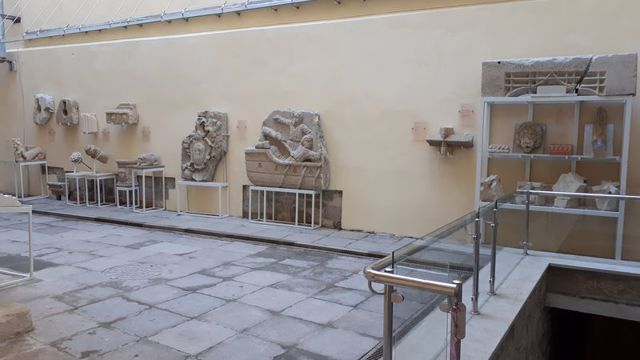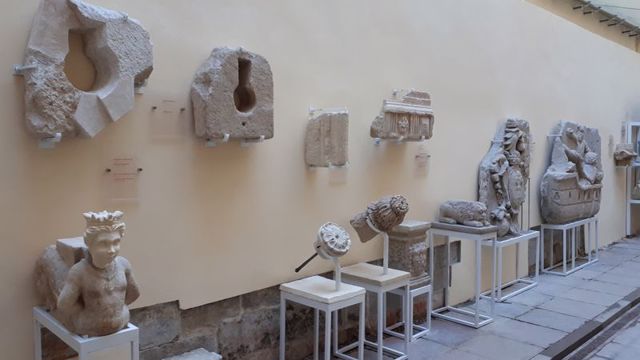Functional temporarily unavailable
Attractions of Ukraine
Attractions region
Attractions Lviv region
Attractions Lviv district
Attractions Lviv
Lviv History Museum (Black House)
Lviv History Museum (Black House), Lviv
Architecture
Museum / gallery
General information about Lviv History Museum (Black House) (Lviv)
One of the most interesting examples of Lviv Renaissance architecture in the ensemble of Rynok Square is the Lorentsovych house, better known as the "Black House" (Chorna Kamyanytsia). The black color sharply distinguishes this building from the other buildings of the square and creates a sharp contrast with it.
The "Black House" was built in 1589 in the style of the late Renaissance by the architect Petro Krasovsky on the order of Sofia Ganel.
During the XVI-XIX centuries, the house changed owners many times, as well as completed and rebuilt. Initially, the building was not black, but under the influence of precipitation, the sandstone masonry was greatly darkened, and now it is sp ...
One of the most interesting examples of Lviv Renaissance architecture in the ensemble of Rynok Square is the Lorentsovych house, better known as the "Black House" (Chorna Kamyanytsia). The black color sharply distinguishes this building from the other buildings of the square and creates a sharp contrast with it.
The "Black House" was built in 1589 in the style of the late Renaissance by the architect Petro Krasovsky on the order of Sofia Ganel.
During the XVI-XIX centuries, the house changed owners many times, as well as completed and rebuilt. Initially, the building was not black, but under the influence of precipitation, the sandstone masonry was greatly darkened, and now it is specially painted black.
Back in 1926, the city bought the "Black House" from the last owner and opened the Lviv History Museum, which is now a department of the Lviv Historical Museum. The almost 800-year history of the city is represented on three floors by authentic objects of XIV-XX centuries: symbolic keys to the city, seals of the magistrate, inaugural chains of the president and mayor, benches from the conference hall, portraits of city leaders, coats of arms of Lviv in different historical periods. You can see a model of princely Lviv of the XIII-XIV centuries and a model of the Renaissance town hall.
In the courtyard and the first floor there is a Lapidarium - an exposition of stone monuments of Lviv: carved from stone architectural and sculptural fragments, parts of old monuments, epitaphs, etc. In total, about 50 samples of stone sculpture from ancient, mostly non-existent, buildings in Lviv.
Одним із найцікавіших зразків львівської ренесансної архітектури в ансамблі площі Ринок є будинок Лоренцовичів, більше відомий як "Чорна кам'яниця". Чорний колір різко вирізняє цю будівлю з-поміж іншої забудови площі та створює з нею різкий контраст.
"Чорну кам’яницю" було збудовано в 1589 році у стилі пізнього ренесансу архітектором Петром Красовським на замовлення Софії Ганель.
Фармацевт Ян Лоренцович відкрив тут одну з перших аптек у Львові. Протягом XVI-XIX століть будинок багато разів міняв власників, а також добудовувався і перебудовувався.
Спочатку будівля не мала чорного забарвлення, але під впливом опадів пісковик кам'яної кладки сильно потемнів, а ...
Одним із найцікавіших зразків львівської ренесансної архітектури в ансамблі площі Ринок є будинок Лоренцовичів, більше відомий як "Чорна кам'яниця". Чорний колір різко вирізняє цю будівлю з-поміж іншої забудови площі та створює з нею різкий контраст.
"Чорну кам’яницю" було збудовано в 1589 році у стилі пізнього ренесансу архітектором Петром Красовським на замовлення Софії Ганель.
Фармацевт Ян Лоренцович відкрив тут одну з перших аптек у Львові. Протягом XVI-XIX століть будинок багато разів міняв власників, а також добудовувався і перебудовувався.
Спочатку будівля не мала чорного забарвлення, але під впливом опадів пісковик кам'яної кладки сильно потемнів, а зараз спеціально пофарбований у чорний колір. Ще в 1926 році місто викупило "Чорну кам’яницю" в останнього власника і відкрило Музей історії Львова, що зараз є відділом Львівського історичного музею.
Майже 800-літню історію міста представляють на трьох поверхах автентичні предметами XIV-XX століть: символічні ключі від міста, печатки магістрату, інавгураційні ланцюги президента та мера, лави із зали засідань, портрети очільників міста, герби Львова в різні історичні періоди. Можна побачити макет княжого Львова ХІІІ-XIV століть і макет ренесансної ратуші.
На подвір’ї та першому поверсі музею облаштовано Лапідарій – експозицію кам’яних пам’яток Львова: різьблених з каменю архітектурних та скульптурних фраґментів, частин старих пам’ятників, епітафій тощо. Загалом близько 50 зразків кам’яної пластики з давніх, переважно вже неіснуючих, споруд Львова.
Practical information about Lviv History Museum (Black House) (Lviv)
Last update
8/30/2025
| Categories | Architecture, Museum / gallery |
|---|---|
| Date of foundation | 1588-1589 |
| Hours of work | 10:00–18:00 |
| Address |
Rynok Square, 4
Lviv |
| Coordinates |
49.84238° N, 24.03258° E
|
| Phone | 380 32 235 8334, +380 32 235 5367, +380 32 235 8787, +380 97 740 7348, |
| muzyka.andrii@gmail.com , lhm@mail.lviv.ua, zuzxix-xxct@ukr.net | |
| Official site |
https://lhm.lviv.ua/location/k... |
|
https://www.facebook.com/lviv.... |
|
|
https://instagram.com/lviv.his... |
|
| YouTube |
https://youtube.com/channel/UC... |
| Additional services | |
| Cost | adults – 100 UAH, schoolchildren, students and pensioners – 50 UAH; excursion – 100/50 UAH per person |
Аccessibility information
According to the institution
Have you visited Lviv History Museum (Black House) in Lviv?
Add practical or descriptive information, photos, links
What to see, where to go next?

